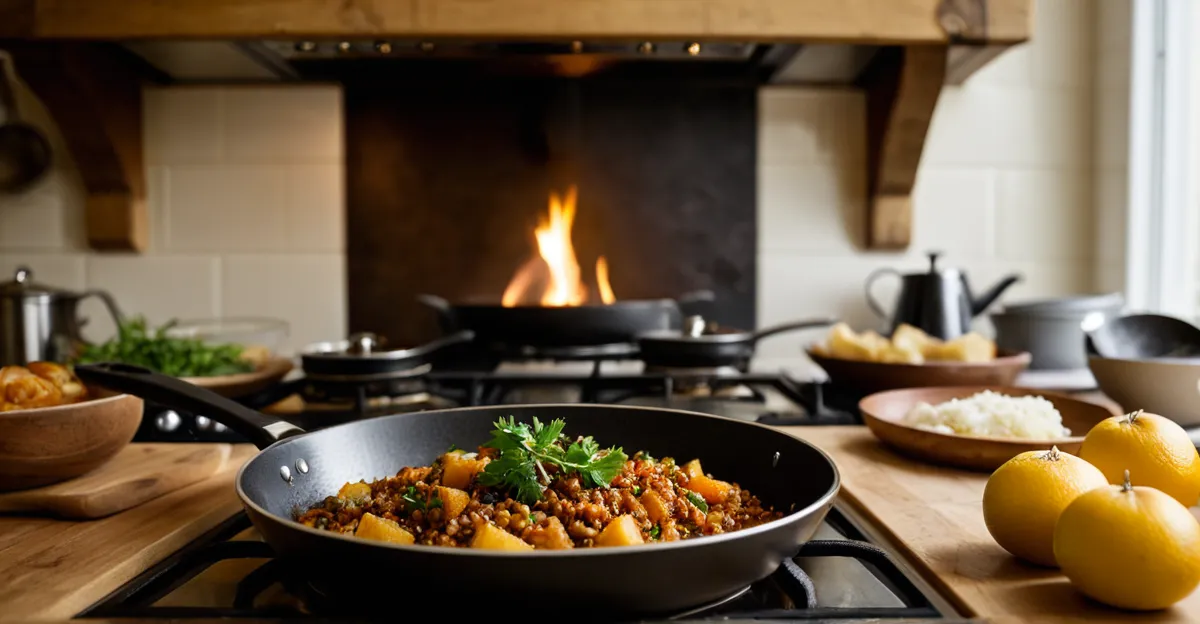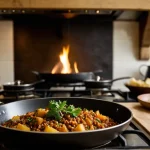Understanding the Diversity of Regional British Cuisines
Britain’s culinary landscape is richly diverse, shaped by distinct regional cooking styles rooted in history and geography. Each region embodies unique regional British food traditions that have evolved through local ingredients, climate, and cultural influences.
From the rugged coastlines of Cornwall to the rolling hills of Yorkshire, the British culinary heritage reflects these varied environments. Coastal areas emphasize fresh seafood, while inland regions focus on hearty meats and root vegetables. The influence of historical events—such as Norse invasions, Roman occupation, and later trade routes—has woven foreign flavors and techniques into local dishes, enriching the British culinary heritage.
In the same genre : What are the essential steps to making a traditional ploughman’s lunch?
This regional variety is crucial because it showcases Britain’s rich food identity beyond generic stereotypes. For example, Wales is known for its emphasis on lamb and dairy, reflecting its mountainous pastures. Scotland’s dishes often reveal a connection to game and oats, stemming from its harsher climate.
Appreciating these differences enables a deeper understanding of how regional British food is not merely about taste but also about culture, history, and place, each contributing to the unique tapestry of British cuisine.
Have you seen this : How Do Traditional British Recipes Influence Today’s Culinary Trends?
Signature Dishes from Key British Regions
Exploring British regional dishes reveals a rich tapestry of local British cuisine rooted deeply in history and geography. Cornwall, famed for the Cornish pasty, offers a handheld pastry filled traditionally with beef, potato, turnip, and onion—a practical meal for miners reflecting regional ingredients and working-class history. Yorkshire’s iconic Yorkshire pudding, a baked batter dish often served with roast beef and gravy, embodies the region’s hearty food culture.
In Scotland, Scotch broth is a nourishing soup packed with barley, lamb, and root vegetables. This dish showcases the adaptation to Scotland’s cooler climate and reliance on staple grains and game. Wales presents Welsh rarebit, a savory melted cheese sauce on toasted bread, illustrating the region’s strong dairy heritage. Northern Ireland’s Ulster fry, a full breakfast featuring sausages, bacon, eggs, soda bread, and black pudding, highlights local British dishes designed for sustenance and comfort.
These iconic recipes are more than meals; they represent regional cooking styles that reflect each area’s environment and cultural legacy. Understanding their origins deepens appreciation for the British culinary heritage and enhances enjoyment of its diverse flavors.
Sourcing Authentic Ingredients for Regional Recipes
Sourcing genuine British ingredients is essential to capturing the true essence of regional British food. Many authentic recipes rely on specific local produce not commonly found outside the UK—such as Highland oatmeal in Scotland or Cornish clotted cream. When these are unavailable, thoughtful ingredient substitutions can help maintain flavour and texture. For instance, using locally milled steel-cut oats can approximate Scottish oatmeal’s nuttiness.
Finding regional ingredients abroad often involves specialty stores, farmers’ markets, or online suppliers focusing on authentic British fare. Maintaining local food sourcing principles supports not only authenticity but sustains the flavor profiles that differentiate each region’s cuisine.
To preserve the unique qualities of regional cooking styles, consider these tips:
- Choose fresh, seasonal produce akin to the original geographic area.
- Use traditional herbs and condiments specific to the region.
- Where possible, source meats that match breed and rearing methods central to British culinary heritage.
By paying close attention to ingredient quality and origin, cooks can recreate the distinctive tastes of British regional dishes, bringing regional authenticity to their kitchen despite geographical constraints.
Essential Techniques for Cooking British Regional Dishes
Mastering traditional cooking methods is key to recreating authentic regional British food. Common techniques such as roasting, stewing, and baking form the backbone of many classic dishes. Roasting, prevalent in Yorkshire’s Sunday roasts, develops deep flavours through caramelization. Stewing, used in Scotland’s Scotch broth, gently tenderizes tougher meats and roots, melding textures and aromas. Baking is essential for dishes like the Cornish pasty, where pastry crispness and filling balance depend on correct oven temperatures and timing.
For British home cooking, beginners should focus on these foundational methods, understanding ingredient preparation—from trimming meats to selecting suitable cookware. For instance, slow cooking tougher cuts enhances tenderness, while precise baking times avoid dough sogginess or dryness. Adaptations for modern kitchens include slow cookers or convection ovens, which can replicate traditional results with less hands-on time.
Step-by-step guidance ensures cooks achieve authentic flavours emblematic of diverse regional cooking styles, bridging the gap between historical culinary practices and today’s home kitchens. Embracing these essential techniques not only preserves the British culinary heritage but also allows exploration of its rich tastes with confidence and ease.
Exploring Regional British Cuisine through Themed Meal Ideas
Planning a British regional menu offers a lively way to delve into the diversity of regional British food. By selecting dishes representative of specific areas, you create a curated culinary journey that highlights unique regional cooking styles. For example, a themed dinner might feature a starter of Scotch broth, followed by a main of Cornish pasty, and finish with Welsh cakes for dessert—each course reflecting distinct traditions and ingredients.
When hosting such themed dinners, consider pairing dishes with complementary beverages common to their regions, such as a Scottish ale or Welsh cider, to deepen the immersive experience. Presentation also matters; serving Yorkshire pudding alongside roast beef, for instance, enhances both authenticity and enjoyment.
Encouraging experimentation within these menus helps personalize the experience. Swap ingredient variations or incorporate modern twists while maintaining the core essence of each dish. This approach fosters appreciation for the British culinary heritage and invites exploration of less familiar regional British food.
Through thoughtful menu planning and creative execution, themed dinners become more than meals—they are engaging explorations of Britain’s rich and varied culinary landscape.






